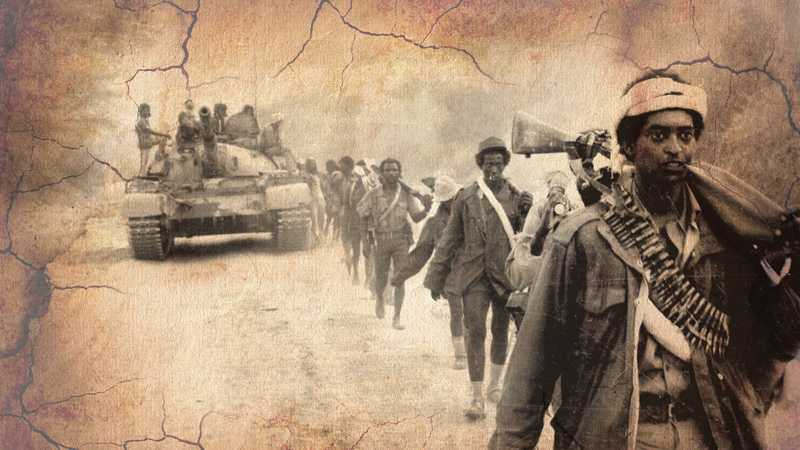Capacities of EPLF and Ethiopian Armies at Afabet
In March of 1988
Capacities of EPLF and Ethiopian Armies at the Battle of Afabet when EPLF launched an offensive to destroy Nadew Command
 EPLF freedom fighters on the march with a tank unit
EPLF freedom fighters on the march with a tank unit
Once the Eritrean People’s Liberation Front (EPLF) had decided to launch an offensive to destroy the Ethiopian Army’s Nadew Command at Afabet, it signaled a crucial turning point in the armed struggle for Eritrea’s independence.
After meticulous planning and preparation, the time had come for the EPLF to switch its stance from defensive to offensive at a much larger scale than before.
Although the armies were not evenly matched, EPLF believed it was up to the challenge having carried out a long-game plan to weaken the Ethiopian army’s stance and cover throughout Eritrea.
EPLF’s Troop Deployment
To carry out this extensive decisive attack operation, the EPLF assigned several units with specific missions and objectives. The units were:
- Division 85
- Division 61
- Division 16
- Division 70
- Division 52
- Mechanized Division 74
- Various support units (intelligence, engineering, logistics, medical, etc.)
Reports at the time indicate that the total strength of EPLF troops involved in this operation was approximately 10,400.
Ethiopian Troop Presence in Eritrea
After nearly a decade of intense fighting, the number of Ethiopian troops in Eritrea had been declining. Before the destruction of Nadew Command, the Derg regime had permanently deployed around 94,000 troops in Eritrea, distributed as follows:
- Highlands: about 30,000 troops
- Halhal (under Men’Tr Command): over 21,000 troops
- Barka (under Ber’gd Command): 14,500 troops
- 2nd Army departments: over 7,000 troops
Nadew Command’s Strength and Armament
Nadew Command had suffered significant losses in the previous attack on the Nakfa Front, with over 4,700 killed and wounded. This, along with other issues, had reduced its troop numbers to 16,500. However, with the arrival of two battalions of the 15th Division by helicopter at the start of the fighting, Nadew Command’s troop count at the time of the operation was approximately 18,000.
The main units of the Ethiopian Army on the front lines were:
- 21st Infantry Division
- 19th Infantry Division
- 14th Infantry Division
- 29th Mechanized Brigade (Zerai Deres)
- 157th Artillery Battalion
- Other supporting units
In terms of armament, Nadew Command was equipped with:
WEAPON QUANTITY Tanks 54 130mm field guns 16 122mm field guns 36 BM-21 rocket launchers 12 Heavy cannon guns 55 Light weapons 18,000+
Additionally, they possessed numerous mortars and heavy machine guns.
The Stage was Set
With the EPLF’s meticulous planning and strategic deployment of troops, and Nadew Command’s weakened state, the stage was set for a decisive battle that would shape the future of the Eritreans’ armed struggle and ultimately the path to independence.
The EPLF’s unwavering determination and tactical prowess were about to be put to the ultimate test against the Ethiopian forces.
